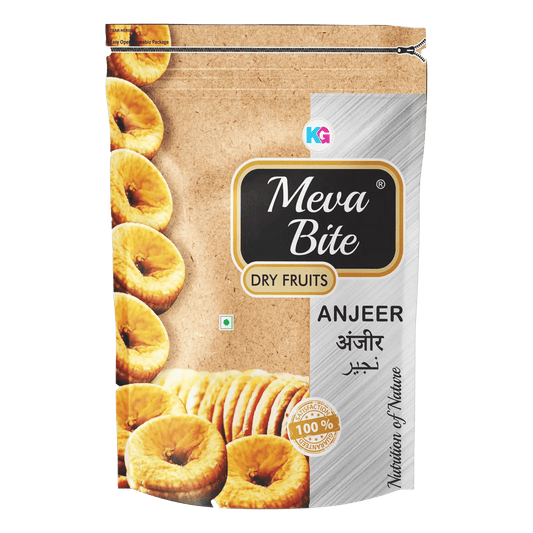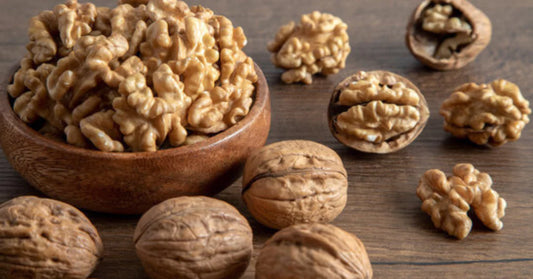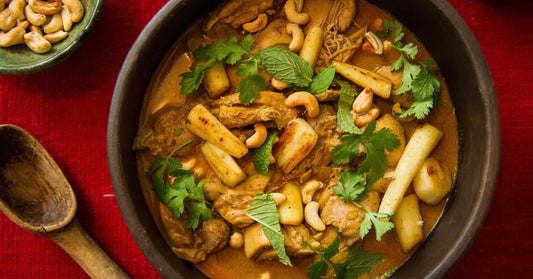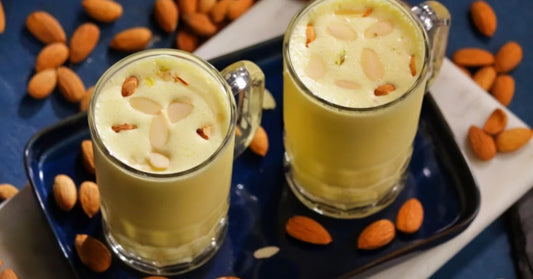Indian winter festivals, especially Lohri, are a time of joy, warmth, and delectable treats. One essential element of these festivities is the use of dry fruits. Let’s delve into why dry fruits hold such significance and how they add value to the celebrations.
Why are dry fruits an essential part of Lohri celebrations?
Short Answer: Dry fruits symbolize prosperity and are traditionally used in Lohri to enhance the festivity.
Long Answer:
Dry fruits are considered symbols of prosperity and wealth in Indian culture. During Lohri, which is celebrated to mark the end of winter and the arrival of longer days, dry fruits are exchanged and consumed as part of various rituals. They add a touch of elegance and richness to the festive atmosphere.
1. Symbolism: Dry fruits like almonds, cashews, and raisins represent prosperity and are offered during Lohri as a sign of respect and goodwill.
2. Nutritional Value: They are packed with essential nutrients that provide energy and warmth, which is particularly beneficial during the cold winter months.
3. Culinary Uses: Dry fruits are used in traditional sweets, snacks, and even as garnishes, enhancing the flavor and texture of festive dishes.
4. Cultural Significance: Including dry fruits in the celebrations is a way to honor traditions and continue age-old customs.
5. Gift Tradition: Exchanging dry fruits as gifts is a common practice, symbolizing good luck and prosperity for the recipient.
6. Communal Bonding: Sharing dry fruits during Lohri fosters a sense of community and strengthens social bonds.
7. Seasonal Relevance: Dry fruits are harvested and readily available during winter, making them a timely addition to festive celebrations.
What are the health benefits of consuming dry fruits during winter festivals?
Short Answer: Dry fruits offer numerous health benefits, including providing warmth and energy during the cold winter months.
Long Answer:
Dry fruits are not only delicious but also packed with health benefits, making them an excellent addition to winter diets. They are rich in vitamins, minerals, and antioxidants that help boost immunity and provide much-needed warmth during the cold season.
1. Energy Boost: Dry fruits are high in natural sugars and healthy fats, providing an instant energy boost.
2. Rich in Nutrients: They are a great source of vitamins A, C, E, and minerals like iron, calcium, and magnesium.
3. Immune Support: The antioxidants in dry fruits help strengthen the immune system, protecting against winter illnesses.
4. Bone Health: Nuts like almonds and walnuts are rich in calcium and phosphorus, which are essential for bone health.
5. Heart Health: Omega-3 fatty acids found in some dry fruits, like walnuts, contribute to cardiovascular health.
6. Digestive Health: The high fiber content in dry fruits aids digestion and prevents constipation.
7. Weight Management: Despite being calorie-dense, dry fruits can help in weight management by keeping you full for longer periods.
8. Skin Health: The vitamins and antioxidants in dry fruits contribute to healthy, glowing skin.
9. Anti-Inflammatory Properties: Certain dry fruits like walnuts and almonds have anti-inflammatory properties that can help reduce inflammation in the body.
10. Mental Health: Dry fruits contain nutrients like omega-3 fatty acids and vitamin E, which are beneficial for brain health and cognitive function.
Which dry fruits are traditionally used in Indian winter festivals like Lohri?
Short Answer: Almonds, cashews, raisins, and pistachios are commonly used in Indian winter festivals like Lohri.
Long Answer:
Various dry fruits are integral to Indian winter festivals, each bringing unique flavors and nutritional benefits. Here are some of the most commonly used dry fruits during Lohri:
1. Almonds: Rich in proteins and healthy fats, almonds are often used in sweets and snacks.
2. Cashews: Known for their creamy texture, cashews are popular in desserts and savory dishes.
3. Raisins: These naturally sweet dried grapes are used in a variety of traditional sweets.
4. Pistachios: Their unique flavor and crunchy texture make them a favorite in festive recipes.
5. Walnuts: Packed with omega-3 fatty acids, walnuts are used in both sweet and savory dishes.
6. Dates: Known for their natural sweetness, dates are a common ingredient in many festive treats.
7. Figs: Dried figs add a unique texture and sweetness to both savory and sweet dishes.
8. Apricots: These are used in traditional sweets and also as a garnish in savory dishes.
9. Prunes: Prunes add a rich, deep flavor to various festive recipes.
10. Saffron: While not a dry fruit, saffron is often paired with dry fruits to add an aromatic and luxurious touch to festive dishes.
How can I incorporate dry fruits into my festive recipes?
Short Answer: Dry fruits can be incorporated into festive recipes through sweets, snacks, and as garnishes.
Long Answer:
Incorporating dry fruits into festive recipes can elevate the flavor, texture, and nutritional value of the dishes. Here are some popular ways to include dry fruits in your Lohri celebrations:
-
Sweets: Add dry fruits to traditional sweets like ladoos, halwa, and kheer for extra richness.
2. Snacks: Mix them into chikki, trail mixes, or roasted snacks for a healthy crunch.
3. Beverages: Use them to garnish festive drinks like thandai or dry fruit milkshake.
4. Garnishes: Sprinkle chopped dry fruits on top of desserts and dishes for added flavor and texture.
5. Baked Goods: Incorporate dry fruits into cakes, cookies, and bread for a festive twist.
6. Stuffing: Use them in stuffing for savory dishes like stuffed parathas or meat preparations.
7. Gift Packs: Create beautiful gift packs with an assortment of dry fruits to share with loved ones.
8. Chutneys and Pickles: Add dry fruits to chutneys and pickles for a unique flavor.
9. Puddings and Custards: Enhance the richness of puddings and custards by adding dry fruits.
10. Rice Dishes: Mix dry fruits into festive rice dishes like biryani and pulao for a burst of flavor and texture.
11. Salads: Add a crunchy and sweet element to salads by incorporating chopped dry fruits.
12. Sauces: Use dry fruits to thicken and sweeten sauces for savory dishes.
13. Dips: Blend dry fruits into dips like hummus for a unique twist.
14. Breakfast Cereals: Add dry fruits to breakfast cereals for a nutritious start to the day.
Where can I find the best quality dry fruits for Lohri celebrations?
Short Answer: You can find high-quality dry fruits at specialty stores, online retailers, and local markets.
Long Answer:
Finding the best quality dry fruits is essential for a memorable Lohri celebration. Here are some places where you can source top-notch dry fruits:
1. Specialty Stores: Visit stores that specialize in dry fruits and nuts for a wide variety of high-quality options.
2. Online Retailers: Shop from trusted online platforms that offer a range of premium dry fruits with home delivery.
3. Local Markets: Explore local markets and bazaars to find fresh and reasonably priced dry fruits.
4. Brand Stores: Purchase from reputed brands like Mevabite, known for their quality and variety.
5. Bulk Purchase: Consider buying in bulk during festival sales for better deals and fresher stock.
6. Farmers’ Markets: Check out farmers’ markets for organic and locally sourced dry fruits.
7. Gift Hampers: Opt for pre-packaged gift hampers that include a selection of high-quality dry fruits.
Conclusion
Dry fruits play a significant role in enhancing the joy and warmth of Lohri celebrations. From their symbolic value to their health benefits and versatile culinary uses, dry fruits are indispensable to Indian winter festivals. By choosing the best quality dry fruits and incorporating them into festive recipes, you can make your Lohri celebrations truly special.















